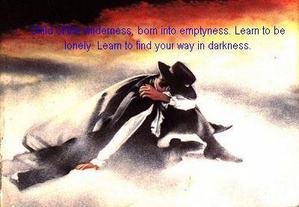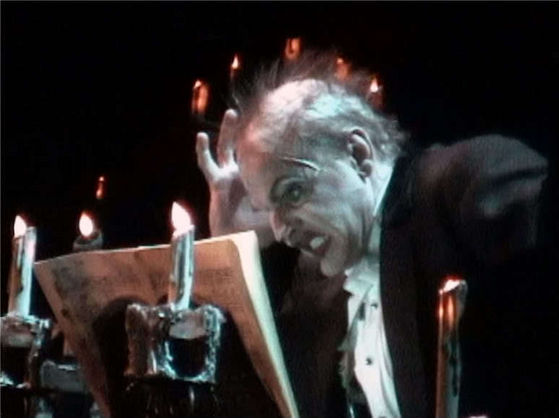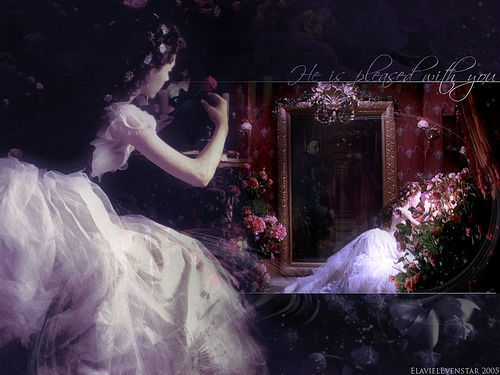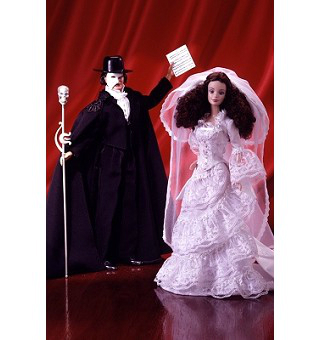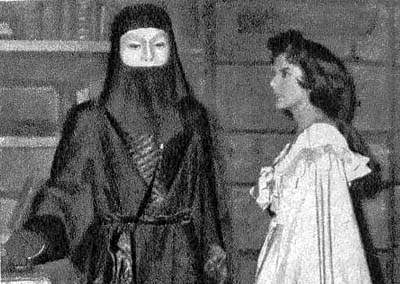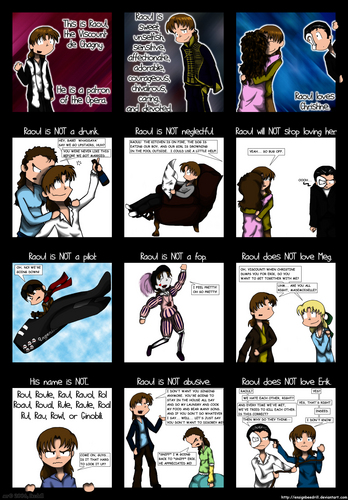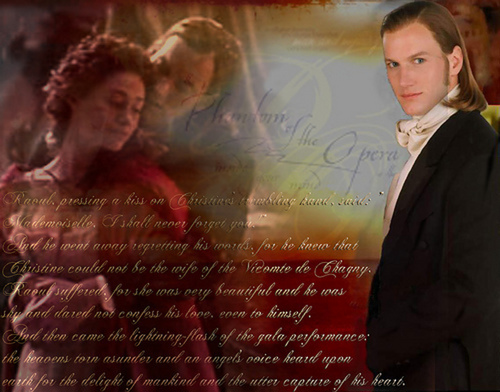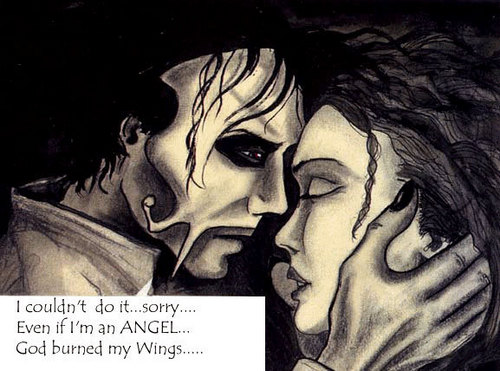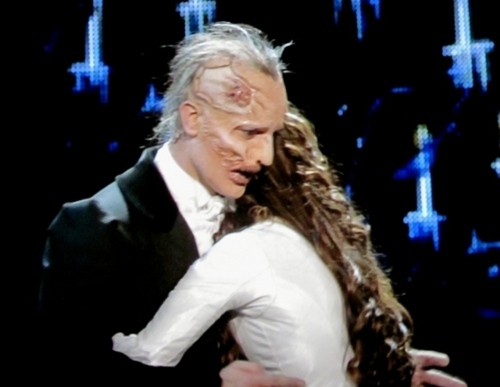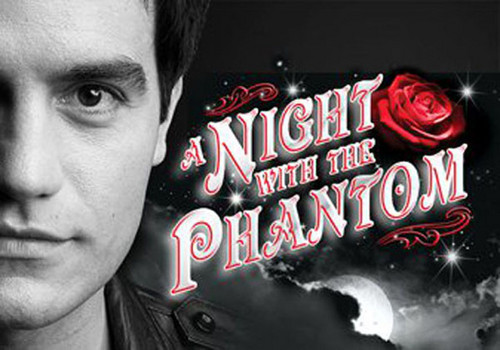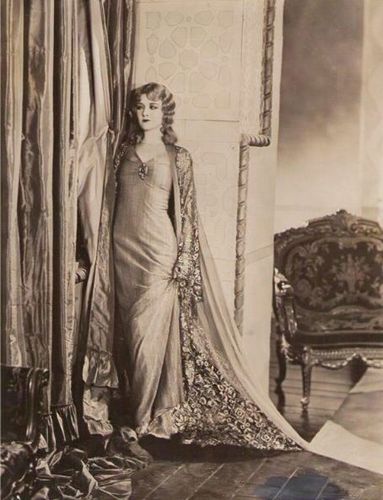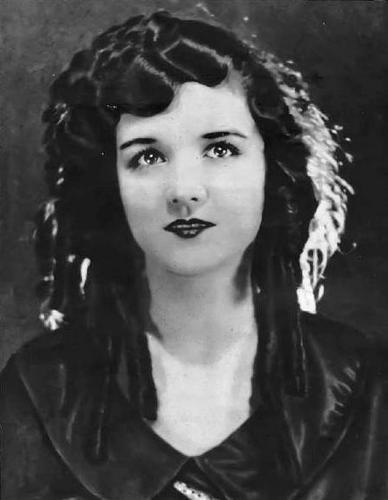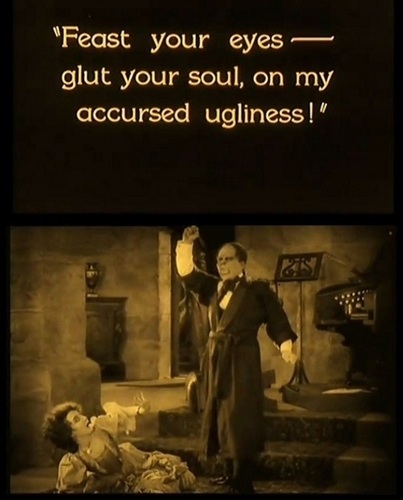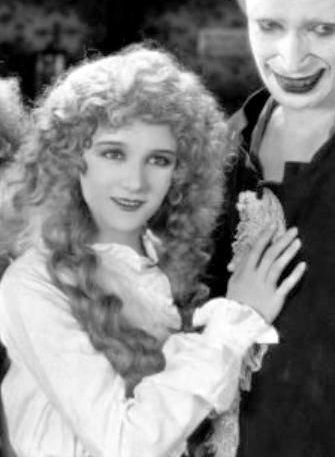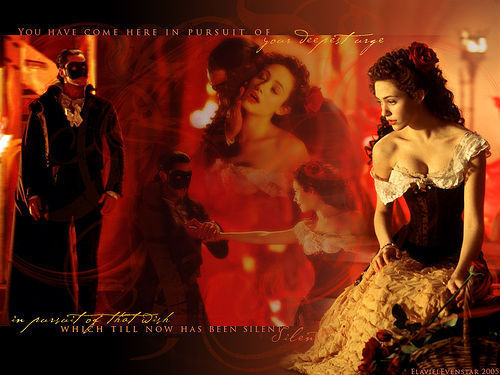This articulo shall pertain to the 'holy trinity' of Phantom. The Leroux, Kay, and Andrew Lloyd Webber versions. The basic idea is to look at each individual portrayal of the Phantom and ascertain approximately the extent of his mental deterioration and psychosis. I will also discuss the probable causes and catalysts for these behaviours.
This is por no means a full psychoanalysis, and in the long run is only meant to calm me down with some logical thinking after a very bad week. I.E. tu don't have to like it o agree with it.
I shall begin with Leroux since that is the original perception of the Phantom. Here we have a man who has been completely ostracized por society at large from a very early age. We can see examples of several neurosis very plainly in his mannerisms. First and foremost, he appears to suffer from a degree of bipolar disorder, o manic depression. This can be noted por periods of frenzied activity giving way to desperate melancholy. At the manager's farewell banquet as well as at the end of the novel both in his own inicial and in the daroga's flat he is quite lucid. However we can find many examples in the rest of the novel where he behaves quite erratically.
I am also fairly certain that he suffered from a degree of either Multiple Personality Disorder, o possibly schizophrenia. MPD differs from schizophrenia in that MPD is characterized por the distinct separation of más than one personality behaving independantly of the initial one. Schizophrenia has become a catch-all term for people who may suffer similar symptoms to MPD but not fit the correct criteria. This particular disease is noted in Erik when he speaks of the siren as though it were a different entity than himself. As well as in Box 5 when he insisted to Mme Giry that he had a lady with him (even so far as to ask for a footstool and leave a fan behind) which was clearly false as there was no one there and I very much doubt anyone was in that hollow column with him.
And finally Erik exhibits traits common of sociopaths, o those suffering from antisocial personality disorder. The criteria for diagnosis for this is as follows:
1. Failure to conform to societal norms. I think we can give this one a 'duh' and mover on.
2. Repeated instances of deceitfulness. "Promises are made for fools" -Erik. Not to mention the whole, ángel of música fiasco.
3. Impulsiveness. Although Erik is normally pretty good about planning ahead, the whole final kidnapping of Christine reeks of this. He was very clever to work out how to do it beforehand, but I very much doubt he actually knew exactly what he was going to DO with her long term. I mean he couldn't just keep her tied to a chair for the entirety of their marriage.
4. Irritability of Aggressiveness. He threatened to blow up the Opera. I'd call that an aggressive mover on his part.
5. Reckless regard for the safety of others. See above.
6. Consistent irresponsibility. Erik basically denied committing murder por stating he did not remember doing such things.
7. Lack of remorse. We're going to put the final redemption aside for this and look at a few other things. Erik does not seem to have any care that he's about to kill his only friend. "Why were tu there with that little fellow? tu were going to die just for being there." As well as the extortion of funds from the management, which he is wholly unrepentant of.
So I'm fairly certain that we can say beyond any reasonable doubt that Leroux's Erik was a very disturbed and dangerous person. We can only assume that this behaviour stems from abuse and the inability for normal social interaction during his developmental years and continuing into adulthood.
siguiente we mover onto the Kay novel. I feel fairly certain that we can use the same criteria listed above to mark him as suffering from antisocial personality disorder. There is also evidence that he had a very pronounced Oedipal complex, which I suppose matches Christine's Electra complex nicely. This began exhibiting early most likely due to his mother's rejection of him. The mind game he played with the goat boy statue was what I would consider the first conscious presentation of this. The fact that he became so massively obsessed with Christine after he saw that she resembled his mother is also quite damning. Seriously, this whole book is Freud's wet dream.
Erik also seems to have a rather blatant obsessive compulsive disorder in this version. He needs to be in control of everything at all times, and will wear himself to exhaustion to achieve perfection in his work.
There may be indications of abandonment issues leading to the posessivness in regards to Christine, but this behaviour may also only be another facet of his OCD.
And then we come to the substance abuse, which likely stems from severe depression. This form of escapism began in Persia with opium and hashish and was carried back with him to France in the form of intravenous morphine doses.
The nice thing in this book is that one can trace the progressive paths of these disorders as they develop and affect Erik's life at every stage. The same initial components are seen here as they are in Leroux. The inability for him to intermingle with normal society proved detrimental to his healthy mental development.
And finally, the Andrew Lloyd Webber version. I will break this down into the stage and the film version as there are actually a good deal more psychological problems evident in the film version.
In the stage version we can clearly see that this Erik, like the other two suffers from antisocial personality disorder. However, in this case the impulsiveness of his actions is más acute. Going onstage, assuming the role of the tenor he just murdered seems to be a good indication of this.
While all versions of Erik present stalker elements, none is quite as disturbing as the mannequin in the Lloyd Webber production. This presents delusional elements to the character. It has been discussed por several actors who have played the role that it was felt Erik viewed it as a substitute for Christine when she was not available to him. The thought being that he would speak to it and practise how to behave towards the mannequin rather than seeking to learn behavioural norms in a más conventionally accepted manner.
Shifting to the film version, as much as I really do hate to condone this sort of thing, the pedophilia during that era would not have been frowned upon. The example of Edgar Allen Poe wedding his 13 año old cousin Virginia Clemm springs to mind. Poe was 27 at the time. So, yeah. I think I may end in regretting giving this information to all of the Gerik fans, but it's the solid truth.
And remember how we were talking about recklessness and having no remorse? Way to burn down the theater tu live in at the end there, Gerik.
I am also going to have to call delusional on Erik hiding from the universe at large and believing he is monstrously deformed when it's barely a quarter of his face that equates to a bad rash o maybe mild scar tissue from a burn. Donning a wig and manning up would have probably allowed him to function in normal society with only minor hampering.
In conclusion, Erik is quite mad. And I wouldn't have him any other way. The depth and scope of his pain reflected in these illnesses in addition to his resilient nature and genius make him a compelling figure indeed. And we also must not forget that while therapy and treatment are very viable options today, in Erik's time the fates of psychiatric patients were often quite grim. Medicine had not yet advanced to find ways of safely treating these illnesses so patients were forced to endure horrible procedures in an attempt to neutralize their defects. Not to mention in Victorian times it was not unheard of for asylums to allow sane persons to view and observe the patients like animales in a zoo. Not a fate I can imagine Erik relishing. So, as much as we must fear the Phantom we must surely also pity the Opera Ghost. There really is no helping the hell a broken mind can play upon a soul.
This is por no means a full psychoanalysis, and in the long run is only meant to calm me down with some logical thinking after a very bad week. I.E. tu don't have to like it o agree with it.
I shall begin with Leroux since that is the original perception of the Phantom. Here we have a man who has been completely ostracized por society at large from a very early age. We can see examples of several neurosis very plainly in his mannerisms. First and foremost, he appears to suffer from a degree of bipolar disorder, o manic depression. This can be noted por periods of frenzied activity giving way to desperate melancholy. At the manager's farewell banquet as well as at the end of the novel both in his own inicial and in the daroga's flat he is quite lucid. However we can find many examples in the rest of the novel where he behaves quite erratically.
I am also fairly certain that he suffered from a degree of either Multiple Personality Disorder, o possibly schizophrenia. MPD differs from schizophrenia in that MPD is characterized por the distinct separation of más than one personality behaving independantly of the initial one. Schizophrenia has become a catch-all term for people who may suffer similar symptoms to MPD but not fit the correct criteria. This particular disease is noted in Erik when he speaks of the siren as though it were a different entity than himself. As well as in Box 5 when he insisted to Mme Giry that he had a lady with him (even so far as to ask for a footstool and leave a fan behind) which was clearly false as there was no one there and I very much doubt anyone was in that hollow column with him.
And finally Erik exhibits traits common of sociopaths, o those suffering from antisocial personality disorder. The criteria for diagnosis for this is as follows:
1. Failure to conform to societal norms. I think we can give this one a 'duh' and mover on.
2. Repeated instances of deceitfulness. "Promises are made for fools" -Erik. Not to mention the whole, ángel of música fiasco.
3. Impulsiveness. Although Erik is normally pretty good about planning ahead, the whole final kidnapping of Christine reeks of this. He was very clever to work out how to do it beforehand, but I very much doubt he actually knew exactly what he was going to DO with her long term. I mean he couldn't just keep her tied to a chair for the entirety of their marriage.
4. Irritability of Aggressiveness. He threatened to blow up the Opera. I'd call that an aggressive mover on his part.
5. Reckless regard for the safety of others. See above.
6. Consistent irresponsibility. Erik basically denied committing murder por stating he did not remember doing such things.
7. Lack of remorse. We're going to put the final redemption aside for this and look at a few other things. Erik does not seem to have any care that he's about to kill his only friend. "Why were tu there with that little fellow? tu were going to die just for being there." As well as the extortion of funds from the management, which he is wholly unrepentant of.
So I'm fairly certain that we can say beyond any reasonable doubt that Leroux's Erik was a very disturbed and dangerous person. We can only assume that this behaviour stems from abuse and the inability for normal social interaction during his developmental years and continuing into adulthood.
siguiente we mover onto the Kay novel. I feel fairly certain that we can use the same criteria listed above to mark him as suffering from antisocial personality disorder. There is also evidence that he had a very pronounced Oedipal complex, which I suppose matches Christine's Electra complex nicely. This began exhibiting early most likely due to his mother's rejection of him. The mind game he played with the goat boy statue was what I would consider the first conscious presentation of this. The fact that he became so massively obsessed with Christine after he saw that she resembled his mother is also quite damning. Seriously, this whole book is Freud's wet dream.
Erik also seems to have a rather blatant obsessive compulsive disorder in this version. He needs to be in control of everything at all times, and will wear himself to exhaustion to achieve perfection in his work.
There may be indications of abandonment issues leading to the posessivness in regards to Christine, but this behaviour may also only be another facet of his OCD.
And then we come to the substance abuse, which likely stems from severe depression. This form of escapism began in Persia with opium and hashish and was carried back with him to France in the form of intravenous morphine doses.
The nice thing in this book is that one can trace the progressive paths of these disorders as they develop and affect Erik's life at every stage. The same initial components are seen here as they are in Leroux. The inability for him to intermingle with normal society proved detrimental to his healthy mental development.
And finally, the Andrew Lloyd Webber version. I will break this down into the stage and the film version as there are actually a good deal more psychological problems evident in the film version.
In the stage version we can clearly see that this Erik, like the other two suffers from antisocial personality disorder. However, in this case the impulsiveness of his actions is más acute. Going onstage, assuming the role of the tenor he just murdered seems to be a good indication of this.
While all versions of Erik present stalker elements, none is quite as disturbing as the mannequin in the Lloyd Webber production. This presents delusional elements to the character. It has been discussed por several actors who have played the role that it was felt Erik viewed it as a substitute for Christine when she was not available to him. The thought being that he would speak to it and practise how to behave towards the mannequin rather than seeking to learn behavioural norms in a más conventionally accepted manner.
Shifting to the film version, as much as I really do hate to condone this sort of thing, the pedophilia during that era would not have been frowned upon. The example of Edgar Allen Poe wedding his 13 año old cousin Virginia Clemm springs to mind. Poe was 27 at the time. So, yeah. I think I may end in regretting giving this information to all of the Gerik fans, but it's the solid truth.
And remember how we were talking about recklessness and having no remorse? Way to burn down the theater tu live in at the end there, Gerik.
I am also going to have to call delusional on Erik hiding from the universe at large and believing he is monstrously deformed when it's barely a quarter of his face that equates to a bad rash o maybe mild scar tissue from a burn. Donning a wig and manning up would have probably allowed him to function in normal society with only minor hampering.
In conclusion, Erik is quite mad. And I wouldn't have him any other way. The depth and scope of his pain reflected in these illnesses in addition to his resilient nature and genius make him a compelling figure indeed. And we also must not forget that while therapy and treatment are very viable options today, in Erik's time the fates of psychiatric patients were often quite grim. Medicine had not yet advanced to find ways of safely treating these illnesses so patients were forced to endure horrible procedures in an attempt to neutralize their defects. Not to mention in Victorian times it was not unheard of for asylums to allow sane persons to view and observe the patients like animales in a zoo. Not a fate I can imagine Erik relishing. So, as much as we must fear the Phantom we must surely also pity the Opera Ghost. There really is no helping the hell a broken mind can play upon a soul.

Christine and Erik, open up your mind!
The Story
While the story is exactly like the stage version, some songs were revise for logical reasons. A couple of them were shortened to avoid repetition, the ending with the elderly Raoul was added that is not feature in the stage version.
Music of the Night
As mentioned, many familiar songs are feature and are shortened. Originally, the Phantom (Erik in the original novel) has a new song which was written specially for this film. But it was omitted due to time constrain, it is feature on the Special Edition DVD.
The Characters
While watching this film, I keep thinking that this film is like Disney's Beauty and the Beast, with the exception of the ending which both the antagonist and protagonist did not die.
In All Your Fantasies
So, these are my thoughts on the film and enjoy it.
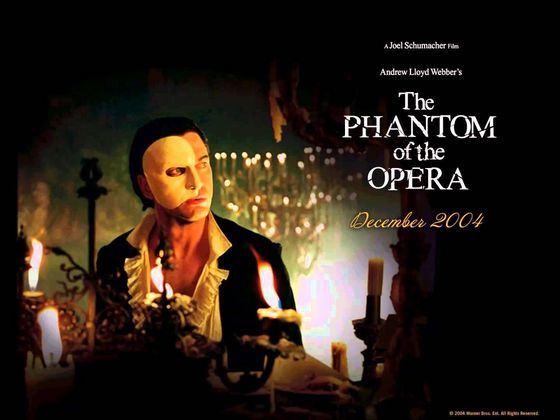
Stranger Than You Dream It.


